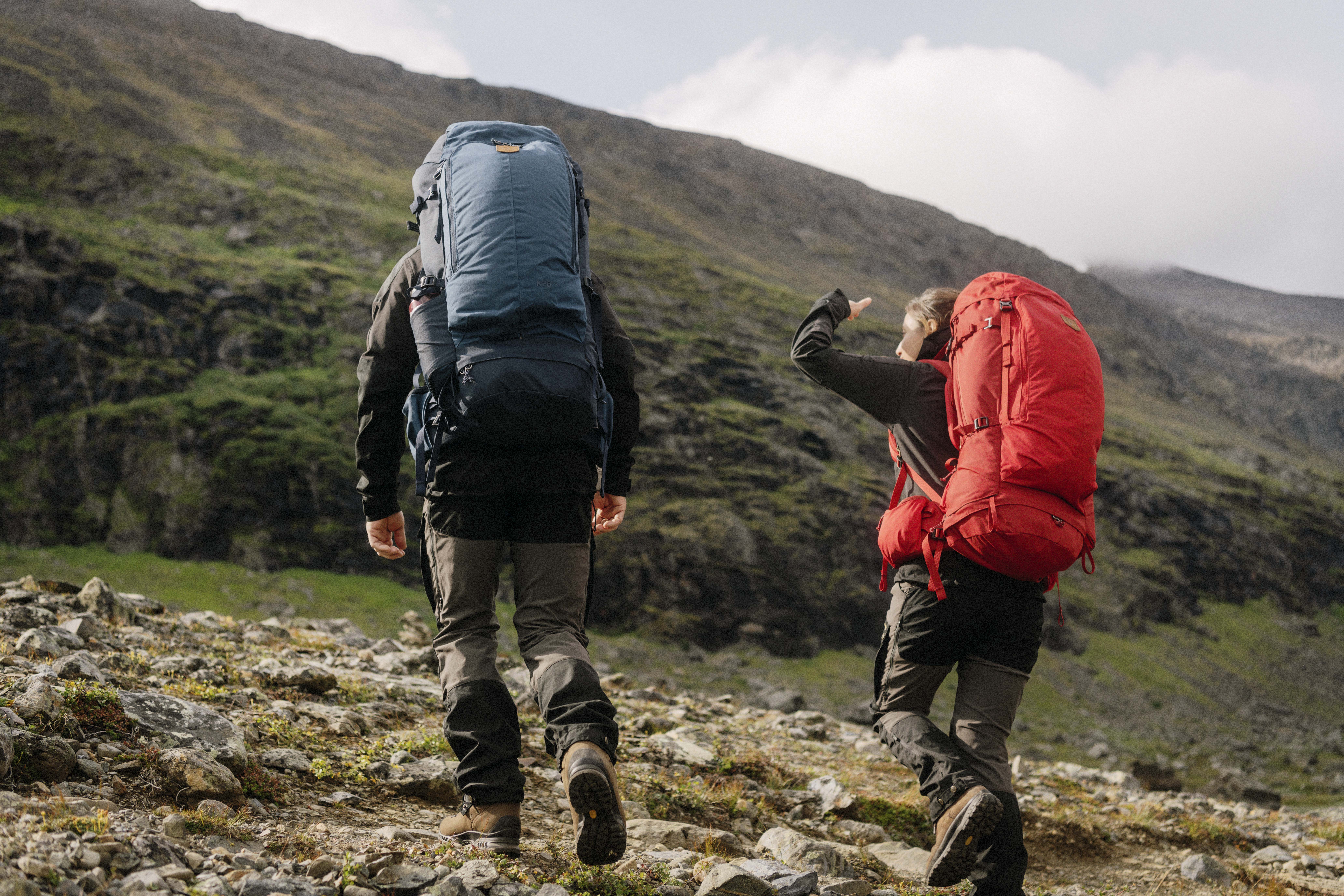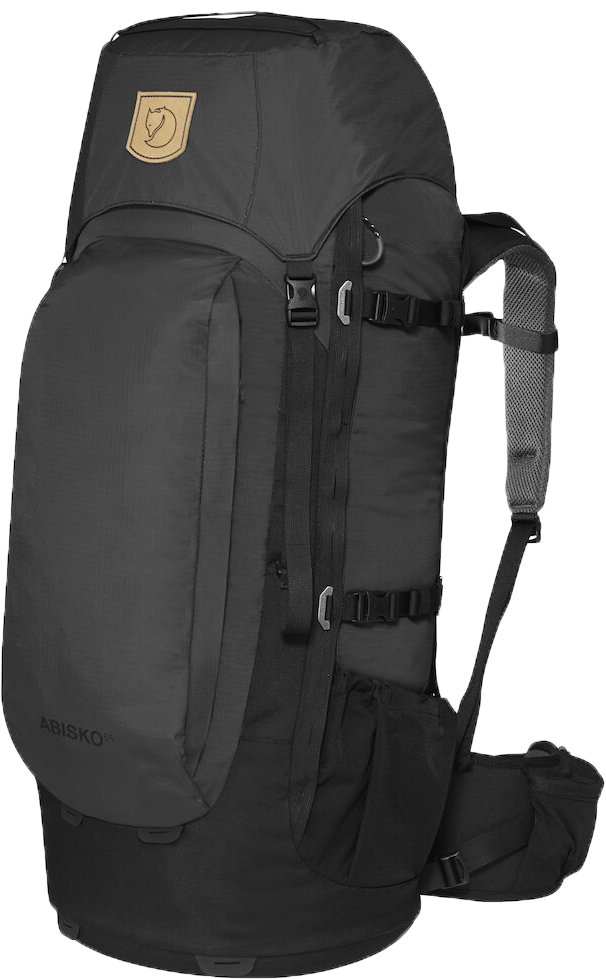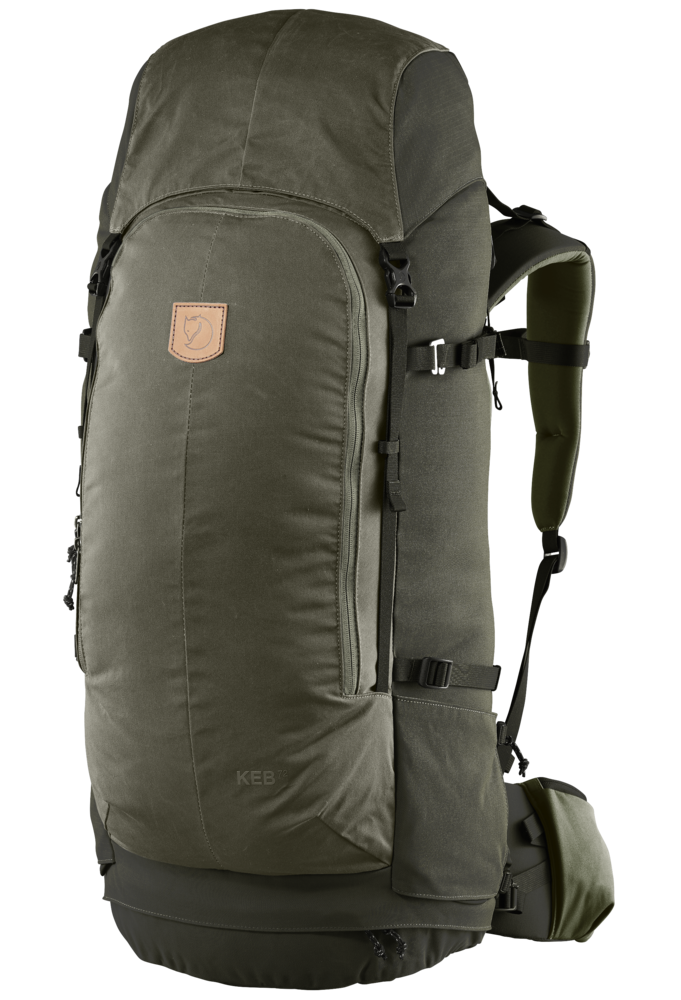How to choose a backpack
Your most important piece of outdoor gear. Here are some tips to help you make the right choice.

The backpack. It’s where it all started for Fjällräven. And it’s usually where all good adventures begin. Your backpack is like your on-the-go wilderness cupboard. It’s where you carry your lunch and your rain jacket. It’s got space for your phone and water. On longer treks it even allows you to carry your home in nature, aka your tent. And when you’re travelling, well, let’s just say you’d be lost without it. Suffice to say, choosing the right backpack for your adventure(s) is really important. Here are some tips on what you should think about.
Match It to your adventure
First things first, how will you be using your backpack? Are you looking for a bag for day trips or overnighters; for global travelling or full-on expeditions with everything you need to be self-sufficient? Or perhaps you want a bit of everything – which will require a little compromising or buying a couple of different backpacks.
This is what we recommend
Day trips: 18-30L
Multiple days, without a tent: 30-55L
Global travelling: 40-65L
Multiple days, with a tent: 65L+
Winter expeditions generally require big backpacks as you need space for larger sleeping bags and extra layers.
Size matters
Next you need to match your pack to your back. This is less important for small daypacks, as they won’t have space for heavy gear. But for bigger packs it’s really important that they fit your back. Too small or too big will result in chaffing and general discomfort.
Find your size
- Start by finding your hip bones.
- The hip belt should be placed directly over them, so the hip bones is centred on the belt, or – if you have slim hips – you may want to have the centre of the hip belt just under your hip bone.
- Tighten the hip belt so it fits snugly over your hips.
- The shoulder straps should start at the back curve of your shoulders. There shouldn’t be a gap between the top of your shoulders and the straps. Likewise, the straps shouldn’t start too low down your back.
We don’t offer different back lengths. Rather, our larger backpacks have an adjustable carrying system, that you can easily customise to your back. This makes buying from the internet a lot easier. We do have women’s specific backpacks, however. These are shaped to better fit a woman’s form.

The frame
Most of our larger backpacks have an aluminium or wooden frame to help stabilise the backpack, making carrying heavier loads easier. This does add extra weight though. So, if you’re looking for light backpack, go for one without a frame. Some of our newer backpacks come with a removable frame, making them more versatile and adaptable depending on the situation and your carrying needs.
Carrying
Backpacks are designed to make carrying easier. Trying to carry even just day-trek essentials without a backpack becomes an adventure in itself. A good backpack should be comfortable, distribute the load evenly and comfortably, transfer weight to your strongest muscles and bones – think legs and hips instead of shoulders – and secure the load close to your body for balance. You should adjust the backpack – shoulder and hip straps – so you’re not bent over double. In fact, a properly fitted (and packed) backpack shouldn’t prevent you from standing up straight.
Adjustments
There are four key areas for you to customise a Fjällräven trekking backpack to your body. These are the shoulders, chest, hips and back.
- Start with the hip belt; it should sit comfortably, preferably with its mid-point over the hip bone. You can tighten the hip stabiliser straps until the backpack sits closely against your back.
- Then move onto the the back panel. Our larger backpacks offer among the greatest adjustability potential in the outdoor industry. Just pull the two Velcro bits apart and slide the back panel to a length that suits your back.
- Then move onto the shoulders; ensure the straps sit on your shoulders, without a gap. Adjust the top stabiliser straps (if present) to ensure the top of the backpack isn’t leaning backwards. However, don’t pull it too tight. If there’s a gap between your shoulders and the straps, you’ve gone too far.
- Finally, the chest strap should sit comfortably across your chest, not too tight so the shoulder straps turn in. It should offer support and reduce the chance of chaffing around the armpits.
Oh, and do all these adjustments with a loaded backpack. It’s hard to get an accurate picture of how the backpack fits when it’s filled with nothing but air.

Other features
Our backpacks don’t just come in different sizes and colours. They have a variety of different features too, from the number and placement of pockets to different opening/access types and gear attachment features. Some are very specific, produced for mountaineering or ski touring. Others are more general. This is largely a personal choice, but here are a few tips.
- You'll generally have to decide between lightweight and the number of features. Mountaineering packs are often light but simple; trekking packs are usually heavier but boast more features.
- If you want to be able to see all your gear - handy when travelling and camping - then go for a pack with a front opening. If you want to get going quickly, a top opening pack is better.
- A removable top lid means you can adjust your pack (and its weight) to your activity.
- Lots of internal pockets are good for separating clothing and gear - ideal for travelling and camping. Too many pockets over-complicate a streamlined mountaineering pack.
- Loops and daisy-chain webbing allow you to attach gear to the outside of your pack. This can be handy on longer treks (when it's not raining) or when on the approach to a climb. But for travelling and in more challenging terrain, too much gear on the outside can get annoying. Having said that, some backpacks come with ice axe and ski attachments. On certain adventures, these features can make all the difference.
Editor’s favourites

Day trips: Ulvö 23L
(Also comes with a roll-top closure).
Versatile, waterproof with easy access to your day-trip essentials. It has a zippered main compartment and side pockets in stretch. And 31% recycled nylon make green hearts beat a little faster.

Multiple days, without a tent: Kaipak 38L
(Also comes in a women’s version).
Just the right number of pockets for you to separate your gear without struggling to find stuff in a hurry. It’s incredibly comfortable and has straps for trekking poles and is hydration system compatible.

Global travelling: Abisko 65L W
(Also comes in men’s version).
Fully adjustable, roomy and not too heavy this backpack is ideal for travellers. The slimline silhouette makes negotiating crowded streets easy and the back panel ensures good airflow even in warmer climates.

Multiple days, with a tent: Keb 72L
(Also comes in a women’s version).
Ergonomic all-season backpack for long trips on foot or skis. With its durable and sustainable materials, this backpack will last for many years of adventures in rough terrain. The slim profile gives freedom of movement and its well-planned compartments make it easy to organize gear.
